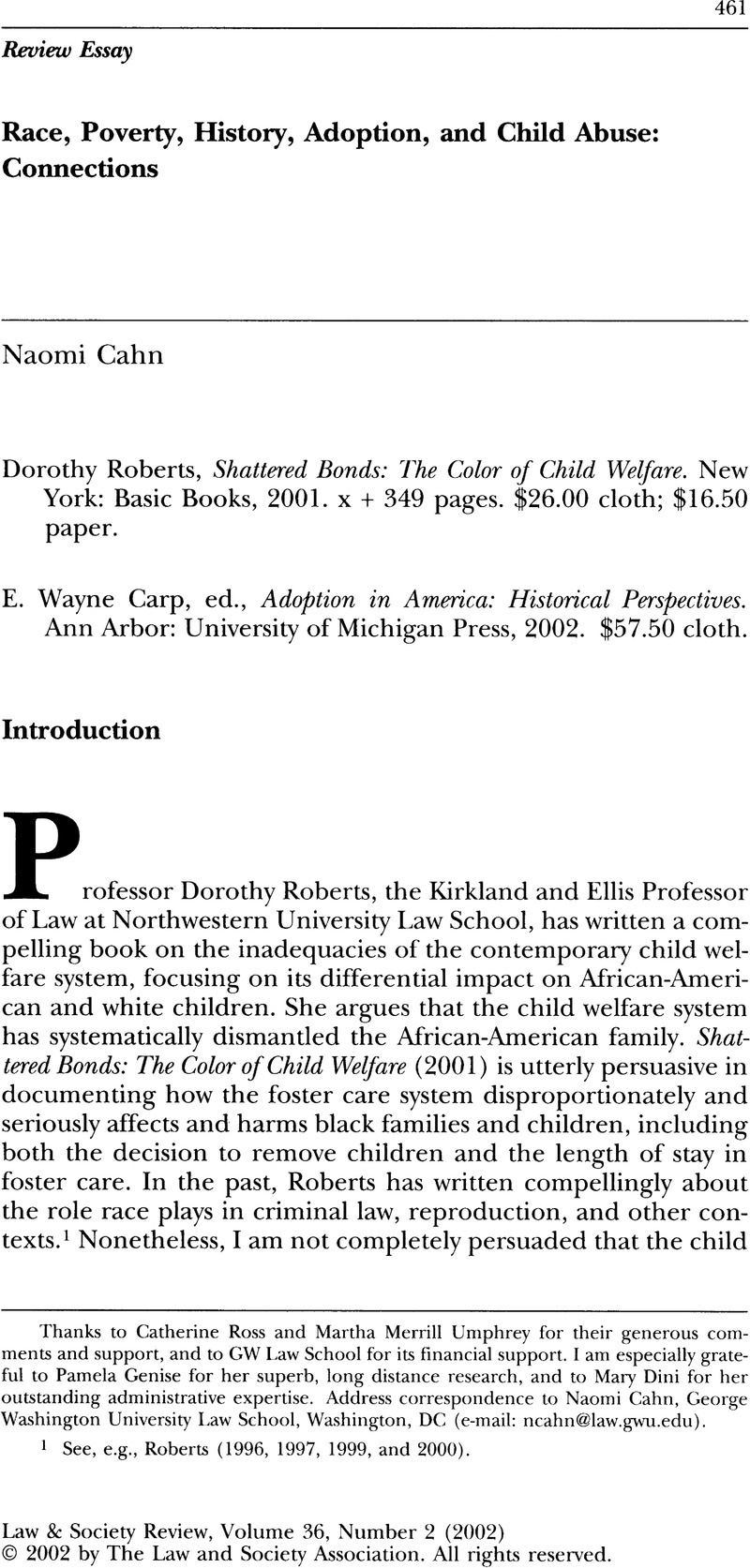Crossref Citations
This article has been cited by the following publications. This list is generated based on data provided by Crossref.
Zamostny, Kathy P.
O'Brien, Karen M.
Baden, Amanda L.
and
Wiley, Mary O'Leary
2003.
The Practice of Adoption.
The Counseling Psychologist,
Vol. 31,
Issue. 6,
p.
651.
O'Dell, Lindsay
2008.
Representations of the ‘Damaged’ Child: ‘Child Saving’ in a British Children's Charity ad Campaign.
Children & Society,
Vol. 22,
Issue. 5,
p.
383.
Grotevant, Harold D.
Grant-Marsney, Holly A.
French, Quade Y. S.
Musante, Danila S.
and
Dolan, Jen H.
2012.
The Oxford Handbook of Poverty and Child Development.
p.
197.
Sawrikar, Pooja
and
Katz, Ilan
2014.
‘Normalizing the Novel’: How Is Culture Addressed in Child Protection Work With Ethnic-Minority Families in Australia?.
Journal of Social Service Research,
Vol. 40,
Issue. 1,
p.
39.
Sawrikar, Pooja
and
Katz, Ilan Barry
2014.
Recommendations for Improving Cultural Competency When Working with Ethnic Minority Families in Child Protection Systems in Australia.
Child and Adolescent Social Work Journal,
Vol. 31,
Issue. 5,
p.
393.
Sawrikar, Pooja
2014.
Inadequate supervision or inadequate sensitivity to cultural differences in parenting? Exploring cross-cultural rates of neglect in an Australian sample.
Qualitative Social Work,
Vol. 13,
Issue. 5,
p.
619.
Abruzzo, Annie
2021.
“Unspoken Understanding”: The Evolution of Chinese American Adoption Communities.
Swarthmore Undergraduate History Journal,
Vol. 2,
Issue. 2,
p.
5.
Larsen Gibby, Ashley
Thomas, Kevin J. A.
and
Ware Metcalf, Maihcen
2024.
Racial Disparities in Socioeconomic Status Among Adoptive Parents.
Journal of Family Issues,



